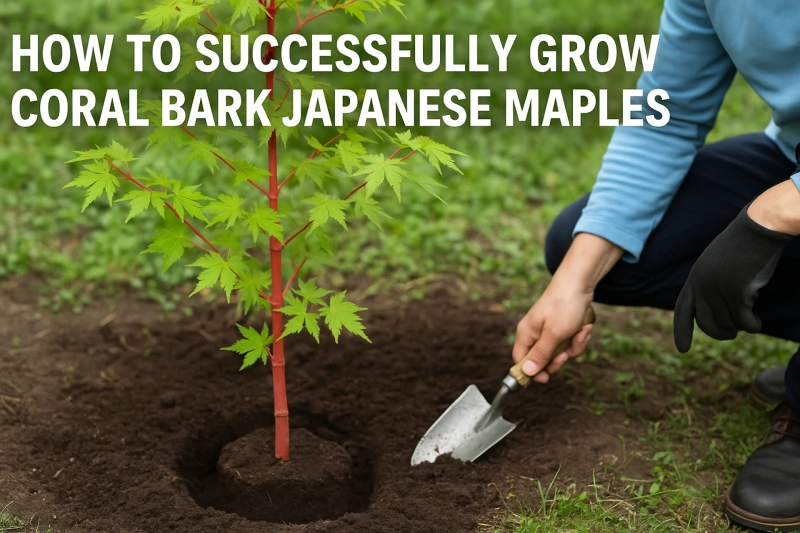Coral Bark Japanese Maples (Acer palmatum 'Sango Kaku') are among the most striking ornamental trees you can add to your garden. These little deciduous trees offer year-round interest and are noted for their brilliant coral-red bark, which gleams particularly bright in winter.
Coral Bark Maples are ideal for adding texture and colour to contemporary as well as classic settings with light green foliage in the spring and summer, followed by golden-yellow leaves in the autumn. If you are interested in adding a Coral Bark Japanese Maple to your garden, then this guide will make sure that you have all the information to ensure healthy growth and long-lasting beauty.
Why should you choose a Coral Bark Maple for your garden?
Coral bark maples stand out for their bright bark, which becomes more noticeable in cooler months when the tree is barren. This makes them a favourite for winter gardens that otherwise lack colour. Furthermore, the beautifully split leaves and elegant form give the tree a sophisticated appearance that would look great in many garden types—from Asian-inspired to woodland and suburban environments.
Perfect Growing Conditions for a Coral Bark Maple
One must pair the Coral Bark Japanese Maple with its perfect surroundings to help it grow:
- Lighting: Direct sunlight is harmful for the plant as it might scorch the leaves, especially in the afternoon. In colder regions, though, full sunlight might improve bark vividness and leaf hue.
- Soil: Well-draining, slightly acidic soil is best. These trees despise compacted or moist soil. Adding organic matter such as compost can help improve drainage and nutrient levels.
- Watering: Young trees need consistent moisture, especially in the first two years. Once the plant has been properly established, the tree is resilient to drought however, it works well with regular watering during dry spells.
- Resilience Zones: These trees thrive in USDA hardiness zones 5–8, making them suitable for a wide range of regions.
How can you properly plant a Coral Bark Maple?
There are certain steps that you need to follow properly if you want to plant a Coral Tree to add more charm to your landscape.
- Choose a sheltered area with morning sun and afternoon shade. Steer clear of gusty locations since the fragile leaves and branches may be harmed.
- To ready the soil, you need to make a hole just as deep but twice as broad as the root ball. Loosen the surrounding earth to support root development. Mix in compost or peat moss if your soil is lacking nutrients or heavy with clay.
- Place the tree in the hole such that the apex of the root ball is flush with the earth. Backfill with dirt, lightly tamp, and water well.
- Keep mulch a few inches from the trunk and apply a 2-3 inch layer surrounding it.
With these steps, you can make sure that your Coral Tree is planted adequately.
Tips to Care Properly for a Coral Bark Maple
- Pruning: The plant requires minimal pruning, and you need to avoid heavy pruning as it can harm the growth of the plant, which results in a less natural form.
- Fertilising: Use a slow-release, balanced fertiliser in early spring. Avoid over-fertilising, as this can lead to weak growth and reduced bark colour.
- Winter Care: Young trees may benefit from protection against frost or extreme cold in the first few years. The red bark colour tends to intensify in colder weather, making winter the best time to enjoy its unique beauty.
Conclusion
Coral Bark Japanese Maple is the perfect plant for your garden if you want a plant that can enhance your landscape all year round. You can also look up more information on the website Yourhomify, which is dedicated to providing users with gardening tips and proper maintenance of plants.



